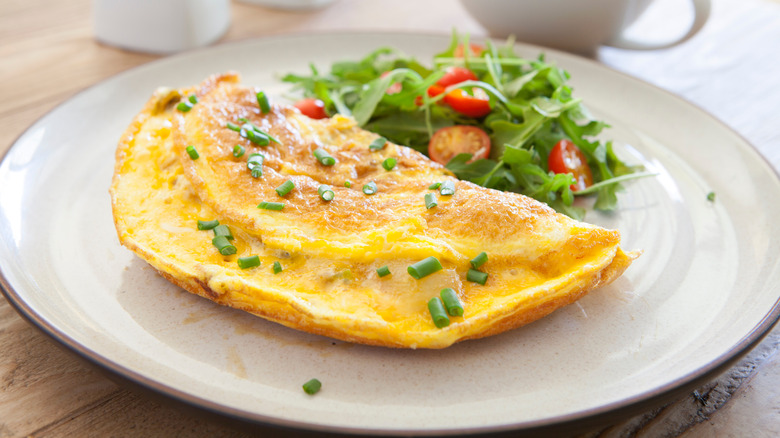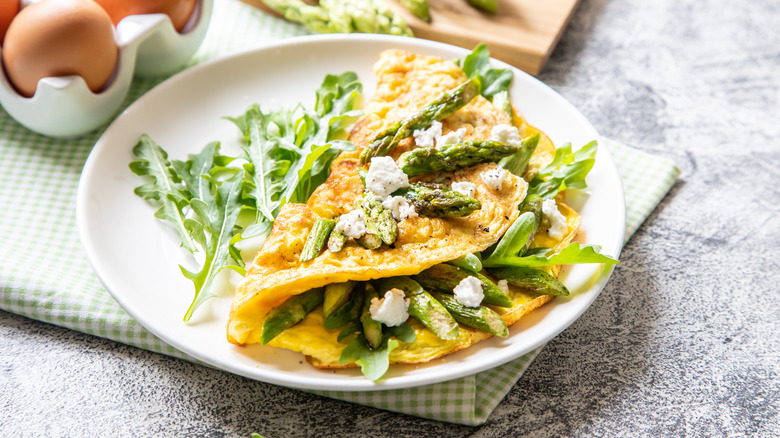The Omelet Rule You've Been Breaking This Whole Time
According to French tradition, the number of folds in a chef's toque represents the number of ways they can masterfully prepare an egg (via Auguste Escoffier School of Culinary Arts). Indeed, while the unassuming-looking product is the central ingredient of some of the simplest dishes out there, even the most straightforward applications take practice to get just right. Think of how easy it is to blunder a fried egg, for instance, or overcook a basic scramble.
One of the most infamously tricky egg dishes, right behind the poached egg, is the omelet. Sure, Julia Child made it look easy when she whipped up plate after plate of French omelets (ahem, omelettes) on an iconic episode of "The French Chef," but mastering the art of omelet-making at home is another story. Maybe your pan is the wrong shape, or your butter is a little burnt, or your flipping skills aren't up to snuff. We don't have all the answers to the perfect omelet, but we do have one tip: Don't overfill it.
Thinly slice your fillings for easy flipping
According to British Lion Eggs, overfilling your omelet with "chunky" pieces of vegetables and cheese can hinder a chef-worthy flip. "Try and keep toppings finely sliced, and if you're worried about it breaking, then evenly spread most of the filling on one side of the omelette and flip the other side so nothing spills," suggests the outlet.
J. Kenji Lopez-Alt has a host of additional tips in Serious Eats for making a restaurant-worthy omelet. Whether you're after a "diner-style" number that's fluffy and visibly browned in certain places or a paler French-style omelet like the one Julia Child prefers, you'll want to salt your eggs at least 15 minutes before pouring them into the pan, which also goes for scrambles.
Lopez-Alt also suggests beating the eggs in hot butter, whose solids "help the eggs take on a nice golden color, while higher heat leads to larger, fluffier curds." Finally, he espouses the "lift-and-tilt" method for getting the perfect flip. "Use a silicone spatula to lift up the edges of the omelette and push them toward the center of the pan, while tilting the pan to allow the raw egg to run underneath," he explains.
As for what to use for your filling, we love a classic ham and cheese. We also wouldn't deny a seasonal vegetable medley (yes, medley) with a smattering of goat cheese. There may be several rules to omelet-making, but what you put inside is totally up to you.

